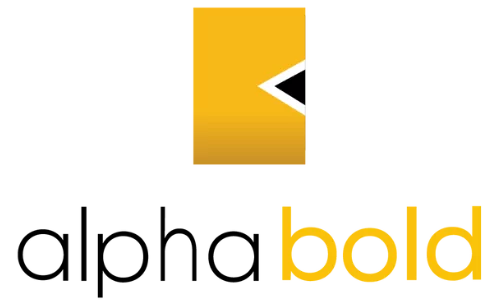We acknowledge that financials are the key to the long-term growth and viability of your company. We all understand the importance of financials in today’s market, yet the bottom line somehow ends up suffering when we focus on revenue and growth. Companies must empower their accounting department with proper tools which will eliminate mundane and manual work, make employees more efficient and improve their morale
Spreadsheets and workarounds are a big NO in the fast-paced business world of today. If you are facing any of the problems mentioned below, it seems that you need to upgrade your financial management system:
- Lack of real-time visibility when it comes to inventory management
- Long financial close time and audit preparations
- Inefficient handling of financial consolidations, multi-state and country taxation, and reporting based on multiple currencies
- Unequipped to handle revenue recognition and changes in accounting standards across countries
In this blog post, we are going to talk about a few must-have features of an efficient financial management system and how these features will help your business.
Core Financial Management Capabilities
A powerful and robust financial management system must have the following capabilities:
-
Accounting Functionality
This one goes without saying, accounting functions such as general ledger, accounts receivable, accounts payable, tax, cash, and payment management with an audit trail built in are a MUST. Furthermore, the system needs to be flexible and scalable enough to allow companies to easily extend existing functionality at little or no extra cost.
-
Modern General Ledger
The general ledger is the foundation of an accounting system. It needs to be adaptable, accessible, and unrestrained by inflexible code-block structures. It must allow for real-time financial intelligence while streamlining operational efficiencies through faster reconciliations and month-end close processes.
It should give professionals a greater visibility and a more robust functionality when it comes to reporting, multi-book capabilities and audit trails.
A capable modern ledger would not just ensure support for multi-national financial management, it would also be capable of managing an unlimited number of accounts and transactions to fuel your company’s innovation and growth.
-
Cash Flow Management
A company’s financial health depends on cash flow management. As a company grows, it is likely to face unexpected costs for several things such as permits, licenses, raw materials, equipment, extended contract work, etc. Most of these investments necessitate large upfront payments and long-term financial planning.
A financial management system must perform a cash flow analysis to assess the elements of a company that affects cash flow. By doing so, companies can isolate cash flow problems and prospects for improvement. Real-time visibility is crucial in making timely, informed decisions. With real-time visibility into cash flows through detailed dashboards and key performance indicators (KPIs), red flags can be identified easily.
-
Recurring Revenue and Revenue Recognition Management
Once you are out of muddy waters in terms of uncertainties related to new customer acquisition, it is time to fortify your customer relationships with the goal of augmenting sales and growth.
Your financial management system must accurately model different chargeability scenarios and get a handle on direct and indirect customer costs—acquisition costs, service costs, and product delivery costs, as well as which customer segments drive margin and which do not. It is also important to have good revenue recognition processes in place—a revenue recognition solution that helps you comply with accounting standards and report financial results promptly.
-
Billing Management
The billing infrastructure of your financial management system must be equipped to manage numerous pricing models for different clients. Again, using spreadsheets is a big NO here as it can lead to multiple errors and backlogs.
The billing infrastructure should ideally equip your business to propose transaction, subscription, usage-based billing, and any hybrid model while administering that revenue correctly and according to the latest revenue recognition standards. A financial management system that is both agile and sophisticated becomes a competitive differentiator that lets your clients alter their billing plans and payment choices, consequently increasing client satisfaction.
-
Financial Planning and Reporting
An efficient financial management system will empower a company by allowing to precisely plan and forecast potential costs for numerous projects by giving more visibility into the existing company operations.
Ideally, it should allow multi-dimensional data collection and automate the consolidation of plans to clearly investigate the costs for personnel, sales, capital equipment, and more. Furthermore, automation also enhances accuracy and decreases errors by removing broken links and formulas. A robust financial management system will empower the finance team to drill through data entry sheets or budget reports into primary transactions and the evidence supporting those transactions. The system’s dashboards and its KPI’s, along with predictive analytics should guide the users through their daily decision-making process.
-
Fixed Asset Management
Growing companies tend to acquire a variety of fixed assets ranging from land to equipment! A good financial management system will help you maintain and control the complete asset lifecycle of all your fixed assets, from creation to depreciation, revaluation, and retirement. This will give you more visibility into its impact on your bottom line. The system needs to be equipped with management functionality that supports multiple depreciation calculation types. It also needs to handle both depreciating and non-depreciating assets, maintenance schedules, and insurance.
The efficient management of fixed assets helps benefit companies from tax deductions related to the depreciation of the assets so that you can reinvest the profits and grow further.
Conclusion:
In this blog post, we discussed a few must-have features of an efficient financial management system and how these features facilitate your business. Stay tuned for the next part of this blog, which will explore additional features that can help you gain a competitive advantage in the industry. Do reach out to us if you have any questions or queries. We are happy to help!
[ninja_form id=4]


1 thought on “Essentials of a Comprehensive Financial Management System (Part 1)”
Comments are closed.